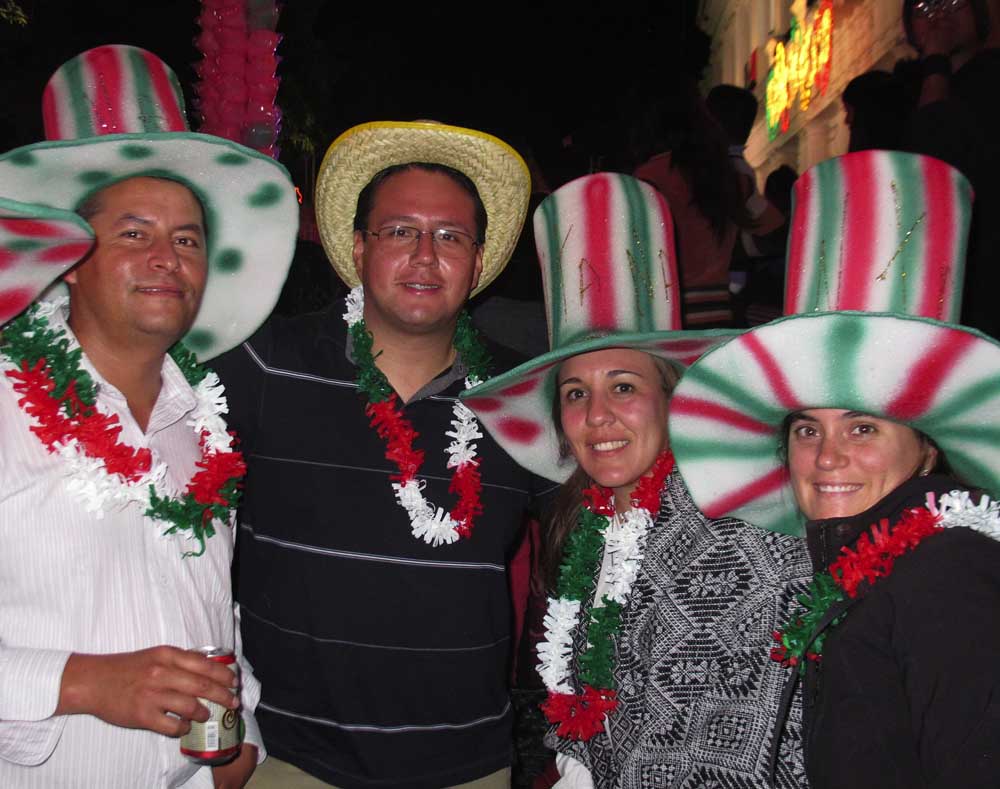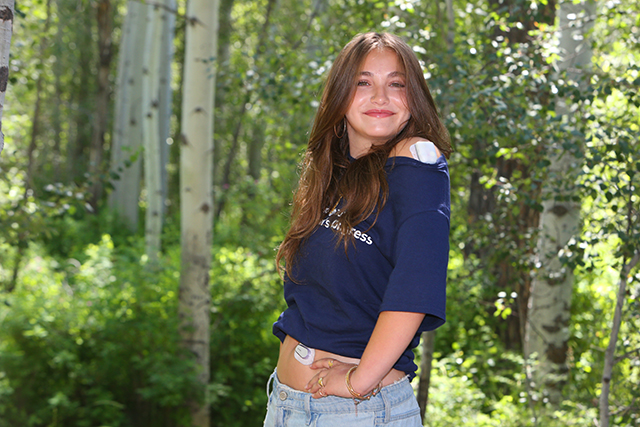Overseas holidays, from cheese in London to trolls in Iceland
Published 12:00 am Sunday, December 25, 2016

- Revelers sport big hats in the color of the Mexican flag as they celebrate Mexican Indpendence Day in the Mexican state of Chiapas.(Brian J. Cantwell/The Seattle Times via Tribune News Service)
LONDON — It was Christmas morning 2007, and instead of being tucked up warm in my bed with visions of sugar plums — or maybe a steaming peppermint mocha — I was watching dozens of swimsuit-clad Brits, at least one in a Santa hat, courting cardiac arrest as they splashed their way across a frigid Hyde Park pond in the annual race for the Peter Pan Cup.
Happily, the swim is open only to members of the sponsoring Serpentine Swimming Club or I might have felt obligated to join in. They’ve been braving the near-freezing waters since this somewhat-loony holiday tradition started in 1864.
Trending
Appropriately, the race is named for the boy who never grows up. “Peter Pan” author J.M. Barrie donated the first trophy in 1904, the same year his famous play debuted on the London stage.
You won’t get in the swim, but if you’re a quick study you might nab a cup of the potent port that a costumed Santa hands out to post-race swimmers to help fend off pneumonia.
It was one of the more unusual ways I’ve spent a Christmas morning.
It helped open my eyes to the novelty — and joy — of sharing holidays with people around the world, whether at Christmas or on other occasions.
A recent consumer-trends survey commissioned by the Australian airline Qantas found that nearly four out of five Americans would consider taking a long-distance international trip during winter. Nearly half of those said they’d like to experience how another culture celebrates the holidays. So indulge that whim.
Some highlights of my family’s overseas experiences in festive seasons:
Trending
• Cheesemonger night: Ask what tasty nosh is in the house at Christmas, and the British are liable to say “cheese.” So every December, cheesemakers from across the United Kingdom (and a few from mainland Europe) gather for a special night offering their tastiest cheeses at Borough Market. The open-air market (boroughmarket.org.uk), London’s oldest food market, has been serving the Southwark district for more than 1,000 years.
My wife, our grown daughter and I sipped hot scrumpy — spiced hard cider — and sampled everything from Welsh Caerphilly to the best Stilton. We purchased several samples to take back to our rented flat.
When my wife found she’d run low on cash, she gave her last few coins to the man slicing her some Redesdale sheep’s-milk cheese and asked for as much as that might buy. He gave her a generous slab — worth considerably more than she’d tendered — and pronounced, “There you go, luv, that’ll be your Christmas treat!”
• Ice skating: We tried it on a public rink in the Tower of London’s moat (toweroflondonicerink.co.uk). Open-air ice rinks pop up like mushrooms across London in December, with skates for rent and hot chocolate and mulled wine for sale.
• Pantomimes: This has nothing to do with people in whiteface who pretend to wash windows. Britain’s Christmas family-theater tradition adapts traditional fairy tales to a delightfully kitschy format that includes the audience frequently warning the hero to “look out behind you!” and features double-entendre jokes that soar over kids’ heads while making parents blush.
We joined in the hammy give-and-take along with English families during a memorable Old Vic Theatre adaptation of “Cinderella” authored by British actor Stephen Fry and starring Pauline Collins as the Fairy Godmother. (Here’s what’s on this year: timeout.com/london/theatre/christmas-pantomimes-in-london.)
• Shopping at Harrods and Fortnum’s: Our VRBO.com flat, where the doorman delivered a Christmas tree on our arrival, was a block from the shopping wonderland that is Harrods. (It took me several days of remarking it always seemed to start snowing as we walked past before it dawned on me that Harrods had a snow machine on the roof.) Near Piccadilly Circus, venerable Fortnum & Mason (fortnumandmason.com) was the place to shop for delectable Christmas puddings and other high-end edibles, from peppermint truffles to Highgrove Prince of Wales Blend tea.
‘Yule Lad’ days in Iceland
Iceland has some of the more endearingly odd December traditions, such as the legend of the “Yule Lads,” 13 fabled sons of mountain trolls who come down into towns and villages to wreak mischief on the 13 nights before Christmas.
Leaving gifts in the shoes of good children (or rotting potatoes for bad kids), they have names that describe their particular brand of naughtiness, such as Door Slammer, Bowl Licker and Sausage Swiper.
Disconcertingly, we arrived in Reykjavik on the night that “Window Peeper” was to be roving the town. We made extra sure our guesthouse curtains were tightly drawn.
We enjoyed attending one of the National Museum of Iceland’s popular programs in which children can visit with each of the Yule Lads on their designated day. The museum (thjodminjasafn.is/english) teamed up with Icelandic designers and craftspeople to create traditional garb made from Icelandic woolens, sheepskin and felt for the “lads” rather than the red Santa Claus-like outfits that tended to be taking over in modern times. Icelandic television broadcast the event we observed — a big deal in little Reykjavik.
Solstice in Cornwall
The charming, cobblestone-street town of Penzance is at the southwestern tip of England where the peninsular county of Cornwall does a “God touches Adam” reach into the Atlantic. Penzance celebrates winter solstice in a way you won’t forget.
When my daughter finished with a foreign-study term in England, she visited the town Gilbert and Sullivan made famous (“The Pirates of Penzance”) and joined in its Montol Festival (montol.info). The six-day event culminates on the night of the winter solstice with a wild celebration of masked revelers, music played on ancient instruments, torchlight processions and the lighting of a fire beacon by the “Lord of Misrule,” who embodies the sense of topsy-turvy and mockery of the established order that Montol champions.
Some talk up Montol’s Christian ties, but the whole thing exudes a distinctly pagan aura.
“I showed up not knowing quite what to expect, but it was really entrancing, and I ended up getting swept up in the procession, as everybody did,” my daughter recalls. “It rained but it didn’t dampen anyone’s enthusiasm. Musicians kept playing — and it was joyful. Penzance has a medieval-fishing-town vibe and it was a lot of fun.”
Fireworks in Mexico
For something completely different, take in the color and ceremony of Mexican Independence Day.
I was in Chiapas, in the mountain town of San Cristobal de las Casas, in mid-September 2013, and even in this poor corner of southern Mexico, a cradle of rebellion in the 1990s, they celebrate the national holiday with color and fervor. (Mexicans reserve the biggest splurge of celebrating for the night before Sept. 16, their official day of independence.)
There was a big parade in the afternoon with drum-and-bugle corps, school bands, military vehicles and the local ambulance blowing its siren.
For a few pesos, a wandering young face painter added a Mexican flag in glitter paint to the back of my hand. A carnival offered kiddie rides and food booths in front of the cathedral. Folk dancing (and more folk dancing, and more folk dancing) filled the town square.
The finale: Wild fireworks ignited from towering scaffolding, erupting in the national seal of Mexico — with an eagle eating a snake — along with sparking, spinning sombreros and mariachi guitars.
Locals and visitors alike wore towering top hats striped with the national colors of red, white and green, and all shared in high spirits as celebrations continued late into the night.
Where else to celebrate?
A few other places and celebrations you might consider for a visit:
Paris on Bastille Day, July 14, for fireworks from the Eiffel Tower, a military parade and free admission to the Louvre (expect crowds).
Venice on April 25 for the Feast of St. Mark, the city’s patron saint, with Regata di Traghetti (gondola races), along with music, dancing, concerts and carnivals.
Snow & Ice Festival in Harbin, China, Jan. 5-Feb. 25, 2017. The world’s largest such celebration, with 20-foot-tall carvings and entire buildings constructed of ice blocks.
Lerwick, Scotland’s Up Helly Aa Fire Festival. Billed as Europe’s biggest fire festival, with the burning of a full-scale Viking ship. Last Tuesday in January.
Everybody knows the Spaniards do the running of the bulls. A lesser-known but equally crazy event — less likely to result in serious injury — is La Tomatina, a giant annual tomato fight, just for the fun of it, in Bunol. Last Wednesday in August.








